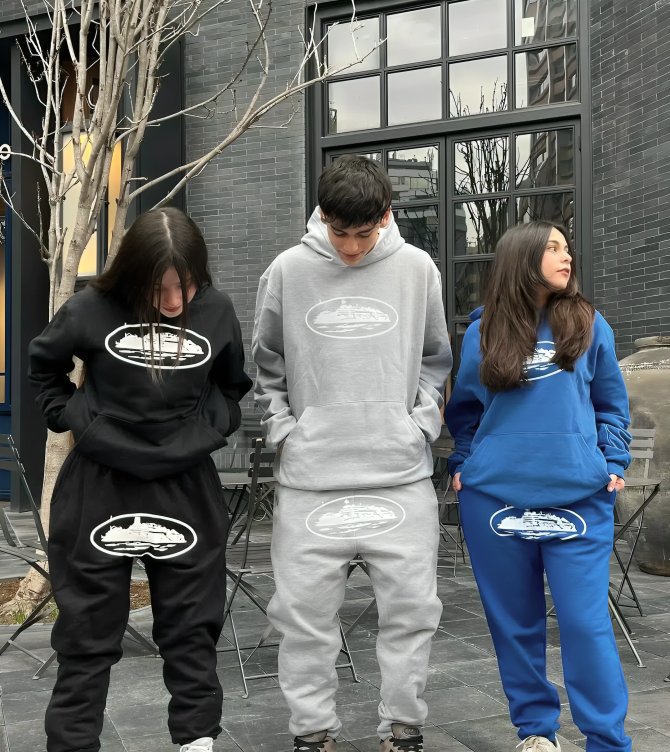
From Metaverse to Main Street: 2025’s Digital-Physical Hybrid Fashion
The fashion industry has always been a harbinger of cultural evolution, and 2025 marks a pivotal moment where the boundaries between the tangible and the virtual dissolve. No longer confined to the physical realm, clothing now exists in a hybrid state—worn as effortlessly on city streets as in digital landscapes. This convergence of realities is not merely a trend but a fundamental redefinition of how we perceive, purchase, and personalize style. The implications are profound, reshaping everything from design processes to consumer behavior, as fashion becomes an omnipresent entity transcending the limits of materiality.
The Metaverse Influence: How Virtual Couture is Shaping Real-World Trends
Once dismissed as a futuristic fantasy, the Metaverse has https://officialcrtzuk.com/ emerged as a dominant force in dictating real-world fashion trends. Digital-only designers, once niche, now collaborate with legacy fashion houses, creating collections that debut simultaneously in pixelated showrooms and Parisian ateliers. The aesthetics of virtual worlds—hyper-saturated hues, exaggerated silhouettes, and kinetic textures—are migrating into physical garments, as designers seek to capture the same audacity that thrives in digital spaces. The result? A bold new visual language that challenges traditional notions of wearability while expanding the creative horizons of fashion itself.
Augmented Reality Apparel: Dressing for Two Worlds at Once
Augmented reality (AR) has evolved beyond gimmicky filters into a sophisticated tool for sartorial expression. In 2025, garments embedded with QR codes or NFC chips unlock digital layers—animations, color shifts, or even narrative elements—when viewed through a smartphone. A seemingly ordinary jacket might shimmer with digital embroidery when scanned, or a dress might display a dynamic pattern that evolves throughout the day. This seamless integration of AR transforms clothing into interactive canvases, allowing wearers to curate their appearance differently for physical and digital audiences.
NFT Wearables: The New Status Symbols of the Digital Age
Non-fungible tokens (NFTs) have transcended their origins as speculative assets to become the cornerstone of digital luxury. Exclusive NFT wearables—virtual sneakers, holographic handbags, or blockchain-authenticated couture—are now coveted as much as their physical counterparts. High-end brands have embraced this shift, offering limited-edition digital pieces that confer exclusivity in online spaces. Meanwhile, hybrid ownership models allow consumers to purchase a garment in both physical and NFT forms, ensuring their style remains cohesive across all platforms.
Phygital Fashion: When Clothing Exists Both On and Off Screen
The term “phygital” (physical + digital) has moved from https://octobersveryownofficial.com/ marketing jargon to industry standard, describing garments designed to function identically in both realms. Designers now employ 3D modeling and digital twinning to create pieces that retain their essence whether worn in a virtual meeting or a boardroom. Some forward-thinking labels even offer “dual-purpose” packaging—a garment arrives with a scannable tag that instantly imports its digital twin into the wearer’s virtual wardrobe. This synergy ensures that fashion remains relevant in an increasingly screen-dominated world.
AI-Generated Designs: The Rise of Algorithmic Couture
Artificial intelligence has transitioned from a behind-the-scenes tool to an active participant in the creative process. Advanced algorithms analyze historical trends, consumer preferences, and even social media sentiment to generate designs that balance novelty with commercial viability. Some brands now employ AI co-designers, which propose avant-garde silhouettes or unexpected fabric combinations that human designers refine. The result is a new wave of “algorithmic couture”—pieces that feel both futuristic and eerily attuned to the zeitgeist.
Smart Fabrics 2.0: Interactive Textiles That Respond to Digital Inputs
The next generation of smart fabrics goes beyond temperature regulation or moisture-wicking—they now interact with digital environments. Conductive threads embedded in clothing can sync with smartphones, changing color or texture based on notifications, music, or even biometric feedback. A dress might pulse gently with the wearer’s heartbeat, or a suit could shift its pattern to align with a corporate presentation. These innovations blur the line between fashion and technology, transforming garments into dynamic extensions of the self.
The Sustainability Angle: How Digital Fashion Reduces Waste
As environmental concerns intensify, digital fashion presents an unexpected solution to overproduction. Virtual garments require no physical materials, eliminating textile waste and carbon emissions associated with manufacturing and shipping. Brands are capitalizing on this by offering digital-only collections, allowing consumers to experiment with bold styles without contributing to landfill clutter. Even physical labels are adopting “digital sampling,” using 3D renders to finalize designs before production, drastically reducing the need for wasteful prototypes.
Retail Reinvented: Virtual Try-Ons and Holographic Runways
The shopping experience has undergone a radical transformation, with virtual try-ons and AI-powered stylists becoming ubiquitous. Augmented reality mirrors in stores project digital garments onto customers, while at home, shoppers can use their smartphones to “wear” items before purchasing. Meanwhile, fashion weeks now feature holographic runway shows, where digital models showcase collections that can be bought as either physical or virtual pieces. This shift democratizes access to high fashion while redefining the very concept of a “store.”
Conclusion:
The year 2025 has cemented digital-physical hybrid fashion not as a fleeting experiment but as the industry’s inevitable trajectory. What began as a novelty has matured into a sophisticated ecosystem where clothing transcends its traditional role, becoming a fluid medium for self-expression across realities. As technology advances and consumer expectations evolve, one truth becomes clear: the future of fashion is not just wearable—it’s programmable, interactive, and limitless. The divide between Metaverse and Main Street has vanished, and in its place stands a new era of style, unbound by the constraints of either world.
